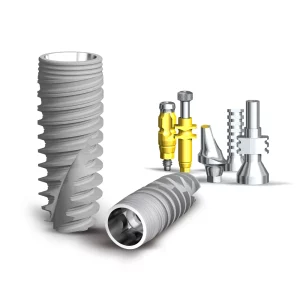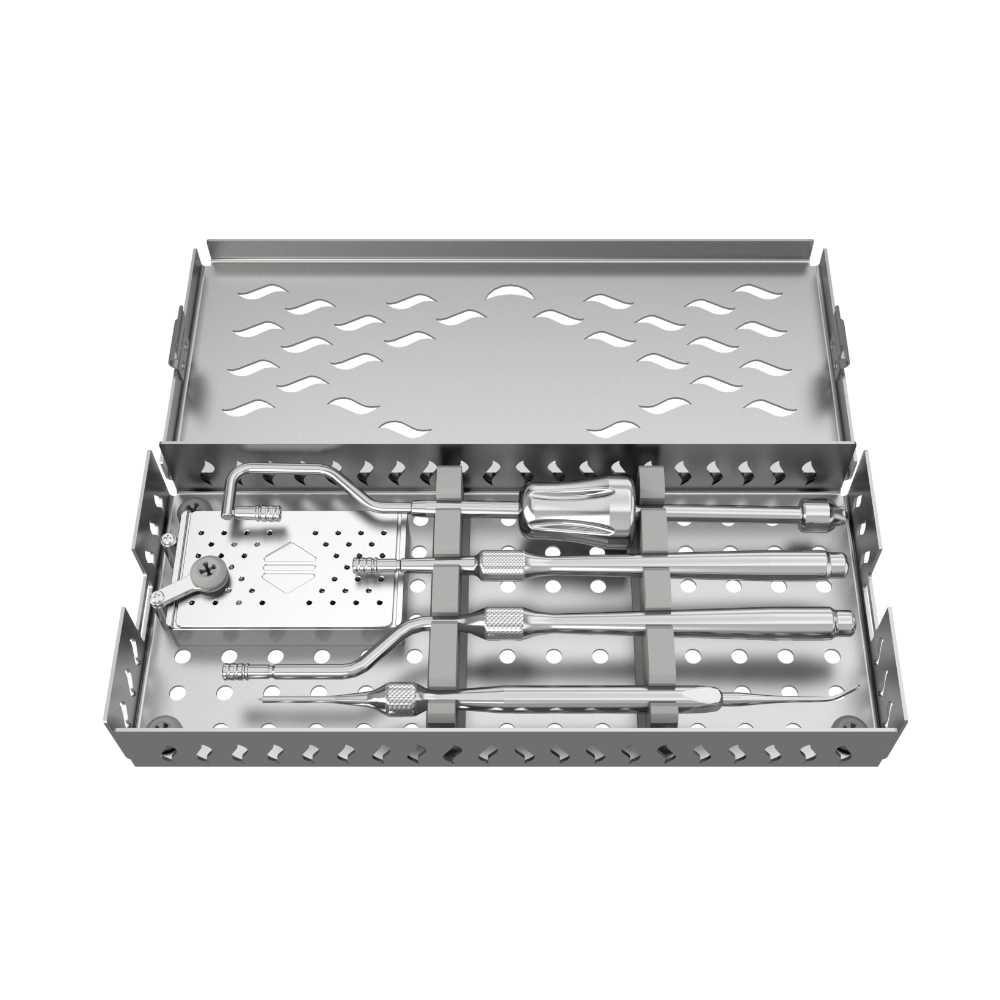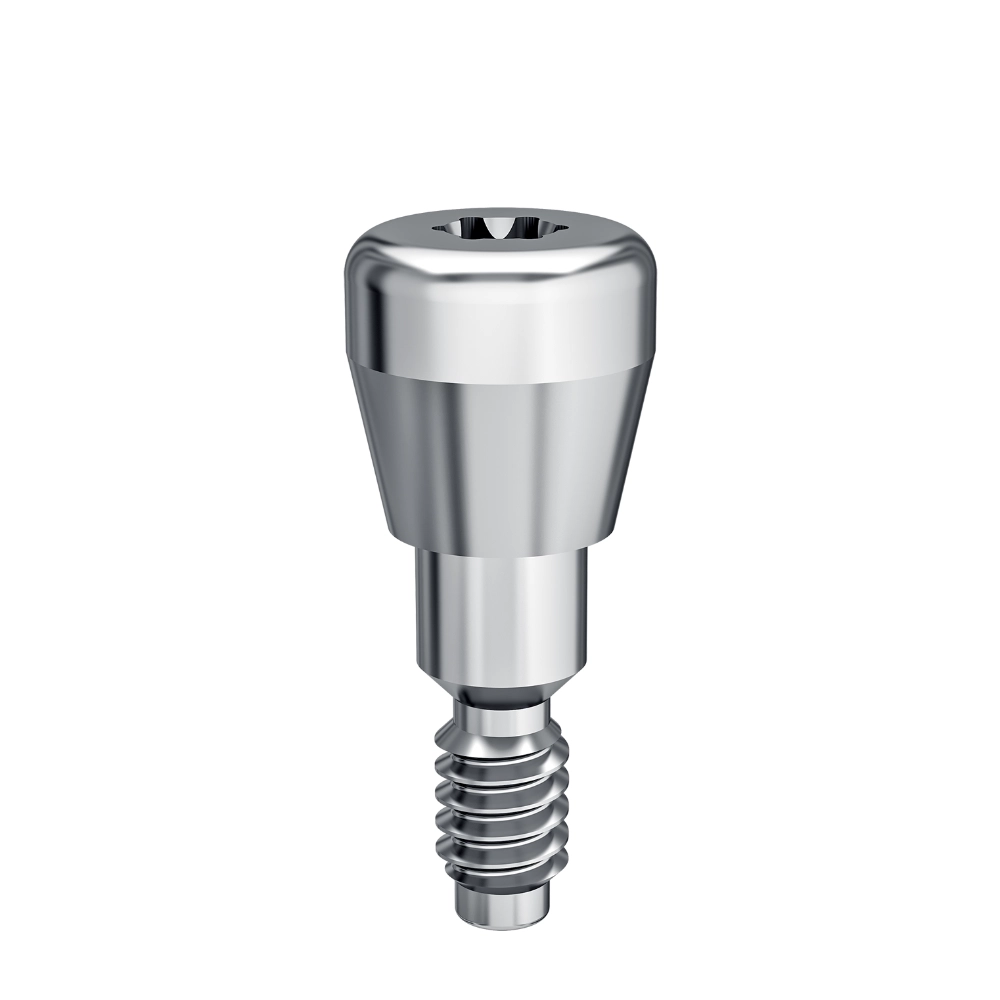Omawiając sposoby łagodzenia bólu związanego z implantami stomatologicznymi, ważne jest, aby najpierw zrozumieć podstawową procedurę implantacji stomatologicznej, potencjalne przyczyny bólu oraz strategie dostosowane do różnych etapów i indywidualnych różnic. Chirurgia implantologiczna, znana jako wszczepianie implantów w implantologii jamy ustnej, ma na celu przywrócenie funkcji i estetyki brakujących zębów poprzez biologiczną integrację sztucznych korzeni zębów (implantów) z kością szczęki. Chociaż technologia ta jest dobrze ugruntowana i szczyci się wysokim wskaźnikiem powodzenia, ból pooperacyjny pozostaje problemem dla wielu pacjentów. W tym artykule dokładnie wyjaśnimy, jak skutecznie złagodzić ból związany z implantami dentystycznymi, odnosząc się do czterech kluczowych obszarów: przygotowania przedoperacyjnego, kontroli śródoperacyjnej, opieki pooperacyjnej i specjalistycznego leczenia bólu.

Przyczyny bólu pooperacyjnego związanego z implantami stomatologicznymi
Ból pooperacyjny związany z implantami stomatologicznymi jest często spowodowany urazem chirurgicznym i infekcją. Sama operacja, jako zabieg traumatyczny, może uszkodzić miejscowe tkanki miękkie i kostne, prowadząc do krótkotrwałego bólu i obrzęku, które zwykle ustępują wraz z gojeniem się rany. Jeśli jednak pobliskie nerwy zostaną uszkodzone z powodu niewłaściwej operacji, może to powodować uporczywy ból. Ponadto infekcja wokół implantu lub niewłaściwa higiena jamy ustnej po zabiegu mogą nasilać ból i obrzęk, wymagając szybkiego leczenia antybiotykami.
Inne przyczyny bólu mogą obejmować stany zapalne, takie jak zapalenie dziąseł, zapalenie przyzębia i zapalenie miazgi. Nieodpowiednia opieka pooperacyjna, długotrwałe zaniedbanie higieny jamy ustnej i niewystarczająca sterylizacja narzędzi medycznych mogą wywoływać te stany zapalne. Co więcej, niewłaściwa integracja implantu z kością, skutki uboczne leków i różnice indywidualne mogą również wpływać na odczuwanie bólu. W związku z tym pacjenci powinni podjąć odpowiednie środki pod kierunkiem swojego dentysty, aby złagodzić ból i przyspieszyć powrót do zdrowia w oparciu o ich indywidualne warunki.
Jak złagodzić ból związany z implantami dentystycznymi
- Przygotowanie przedoperacyjne
1.1 Zrozumienie procedury: Przed podjęciem decyzji o poddaniu się operacji wszczepienia implantów stomatologicznych, pacjenci powinni w pełni zrozumieć etapy zabiegu, potencjalne ryzyko i oczekiwane rezultaty. Wiedza ta może pomóc zmniejszyć niepokój i strach wynikający z nieznanego, a tym samym zmniejszyć odczuwanie bólu psychicznego.
1.2 Ocena stanu zdrowia: Kompleksowa kontrola stanu zdrowia jest konieczna przed operacją, szczególnie w przypadku chorób przewlekłych, takich jak cukrzyca i nadciśnienie, które mogą wpływać na powrót do zdrowia i leczenie bólu. Kontrolowanie tych schorzeń może ograniczyć powikłania pooperacyjne, w tym nasilony ból.
1.3 Odstawienie niektórych leków: Pacjenci powinni poinformować dentystę o wszelkich przyjmowanych lekach, w szczególności lekach przeciwzakrzepowych i NLPZ, ponieważ mogą one wpływać na krwawienie podczas zabiegu chirurgicznego lub kontrolę bólu. Dentysta może zalecić wcześniejsze odstawienie niektórych leków.
1.4 Przygotowanie psychologiczne: Utrzymywanie pozytywnego nastawienia i angażowanie się w dokładną komunikację z dentystą może pomóc w budowaniu zaufania do zabiegu i zmniejszeniu bólu nasilonego przez napięcie.
1.5 Przedoperacyjne łagodzenie bólu: W przypadku szczególnie wrażliwych lub niespokojnych pacjentów dentysta może zalecić przyjmowanie leków przeciwbólowych lub uspokajających przed zabiegiem, aby zminimalizować ból podczas zabiegu.
- Kontrola śródoperacyjna
2.1 Precyzyjna technika chirurgiczna: Doświadczenie i poziom umiejętności dentysty ma kluczowe znaczenie dla zminimalizowania urazu chirurgicznego i zmniejszenia bólu pooperacyjnego. Wybór doświadczonego specjalisty od implantów zapewnia precyzyjną operację i minimalne uszkodzenie otaczających tkanek.
2.2 Znieczulenie miejscowe: Chirurgia implantologiczna zazwyczaj wykorzystuje znieczulenie miejscowe, które jest wstrzykiwane w obszar chirurgiczny w celu znieczulenia tkanek. Skuteczne znieczulenie jest kluczem do zmniejszenia bólu śródoperacyjnego, dlatego pacjenci powinni współpracować z dentystą, aby zapewnić prawidłowe wchłanianie i dyfuzję środka znieczulającego.
2.3 Techniki minimalnie inwazyjne: Wraz z postępem technologii medycznej coraz częściej stosowane są minimalnie inwazyjne techniki implantacji. W porównaniu z tradycyjnymi zabiegami chirurgicznymi, procedury minimalnie inwazyjne powodują mniej urazów, co prowadzi do szybszego powrotu do zdrowia i zmniejszenia bólu pooperacyjnego.
2.4 Dodatkowa kontrola bólu: Podczas zabiegu dentysta może zastosować dodatkowe metody kontroli bólu, takie jak znieczulenie przewodowe nerwów lub dożylne leki przeciwbólowe, aby zapewnić bezbolesny lub minimalnie bolesny zabieg.
- Opieka pooperacyjna
3.1 Przestrzeganie zaleceń lekarskich: Pacjenci powinni ściśle przestrzegać zaleceń dentysty po zabiegu, przyjmując przepisane antybiotyki i leki przeciwbólowe na czas, aby zapobiec infekcji i zmniejszyć ból. Ważne jest również utrzymanie higieny jamy ustnej i unikanie gromadzenia się cząstek jedzenia i bakterii w obszarze chirurgicznym.
3.2 Terapia zimnem i ciepłem: Na wczesnych etapach po operacji stosowanie zimnych okładów może zmniejszyć obrzęk i ból. Delikatnie umieść okład z lodu lub zimny ręcznik na obszarze chirurgicznym na 15-20 minut na raz, z przerwami pomiędzy nimi. Gdy obrzęk ustąpi, należy przejść na terapię ciepłem, aby pobudzić krążenie krwi i regenerację.
3.3 Dostosowanie diety: W dniach następujących po operacji należy unikać spożywania twardych, gorących, zimnych lub pikantnych pokarmów, które mogą podrażniać obszar chirurgiczny i nasilać ból. Zalecane są miękkie i łatwe do przeżucia pokarmy, takie jak owsianka, makaron i jajka na parze. Dodatkowo, zwiększenie spożycia pokarmów bogatych w witaminy i białko może wspomóc gojenie się ran.
3.4 Higiena jamy ustnej: Pacjenci powinni utrzymywać jamę ustną w czystości po zabiegu, ale unikać nadmiernego szczotkowania lub płukania, które mogą uszkodzić obszar chirurgiczny. Stomatolodzy mogą zalecić specjalne płyny do płukania jamy ustnej, a pacjenci powinni delikatnie szczotkować zęby, omijając miejsce operacji.
3.5 Odpoczynek: Odpowiedni sen i odpoczynek są niezbędne do powrotu do zdrowia po operacji. Pacjenci powinni unikać nadmiernego zmęczenia lub intensywnej aktywności fizycznej, które mogą zwiększyć stres fizyczny i ból.
- Specjalistyczne leczenie bólu
4.1 Ocena bólu: Po operacji należy regularnie oceniać poziom bólu, aby w razie potrzeby dostosować plan leczenia bólu. Ocenę bólu można przeprowadzić za pomocą skal, takich jak wizualna skala analogowa (VAS), w celu ilościowego określenia odczuwania bólu przez pacjenta.
4.2 Spersonalizowane plany leczenia bólu: W oparciu o poziom bólu pacjenta, stan zdrowia i historię przyjmowania leków można opracować spersonalizowany plan leczenia bólu. W przypadku łagodnego bólu mogą wystarczyć doustne leki przeciwbólowe, podczas gdy umiarkowany lub silny ból może wymagać silniejszych leków lub alternatywnych metod leczenia.
4.3 Wielomodalne uśmierzanie bólu: Wielomodalne uśmierzanie bólu to podejście do leczenia, które łączy wiele metod uśmierzania bólu w celu osiągnięcia lepszych wyników dzięki efektom synergicznym. W leczeniu bólu po operacji implantologicznej, połączenie doustnych leków przeciwbólowych, miejscowych środków znieczulających, NLPZ i fizykoterapii, takich jak leczenie zimnem i ciepłem, może stanowić skuteczny plan multimodalny.
4.4 Interwencje psychologiczne: Interwencje psychologiczne, takie jak terapia poznawczo-behawioralna i techniki relaksacyjne, są również ważne w radzeniu sobie z bólem związanym z implantami dentystycznymi. Metody te pomagają pacjentom dostosować sposób myślenia, złagodzić niepokój i strach oraz zmniejszyć odczuwanie bólu psychicznego.
4.5 Regularne wizyty kontrolne: Pacjenci powinni zaplanować regularne wizyty kontrolne po zabiegu w celu monitorowania procesu gojenia i poziomu bólu. Dentyści mogą dostosować plany leczenia i dawki leków w oparciu o te wizyty kontrolne, aby zapewnić skuteczną kontrolę bólu i zapobieganie powikłaniom.
Wnioski
Chirurgia implantologiczna jest złożonym zabiegiem stomatologicznym, ale ból można skutecznie złagodzić dzięki dokładnemu przygotowaniu przedoperacyjnemu, precyzyjnej technice chirurgicznej, naukowej opiece pooperacyjnej i spersonalizowanym planom leczenia bólu. Decydując się na operację wszczepienia implantów zębowych, pacjenci powinni wybierać renomowane placówki medyczne i doświadczonych dentystów, a także utrzymywać dobrą komunikację i współpracę z dentystą przez cały proces leczenia, aby osiągnąć najlepsze wyniki.








